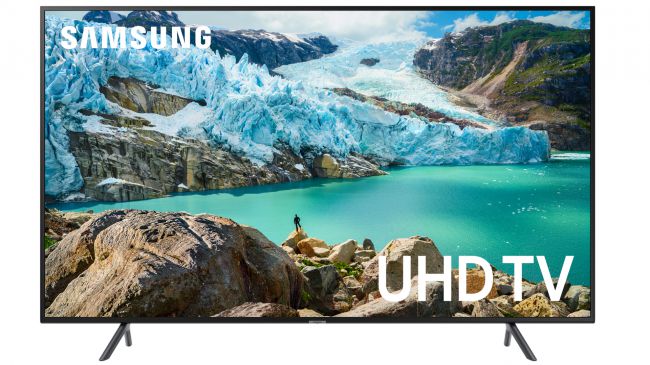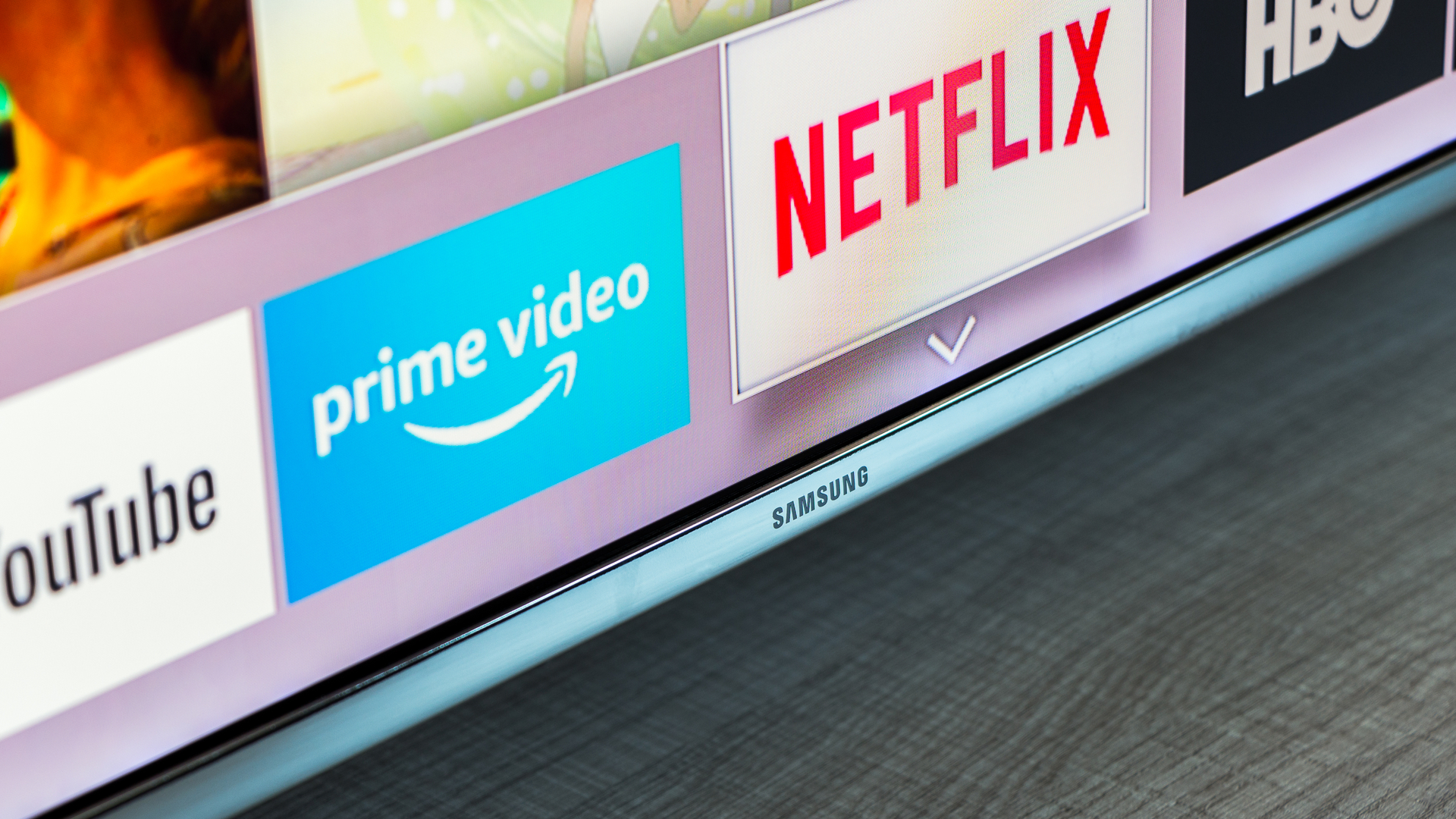Buying the perfect budget TV: how to get the most for your money
Less money, mo’ problems?

We all need our money to go further, and we often have to make concessions and compromises to find the sweet spot between price and performance. Budget TVs are perhaps the most hotly-contested of all cost-cutting tech buys.
It’s easy to highlight the very best TV: you’ll be blown away by the 77-inch LG C9 OLED – provided you can find a small fortune in change down the back of the couch.
But when it comes to the budget market, the competition is fierce, the margins are slim, and the spec sheets can be mind boggling. Where’s the catch, for instance, when you can pick up a 55-inch Dolby Vision-enabled 4K TV from one manufacturer at the same price as a 43-inch Full HD set from another?
With the deals-heavy Amazon Prime Day around the corner and Black Friday following up before the year’s end, what should you be looking out for when buying a budget TV? What are the must-have features, and what would you be better off ignoring in your quest for the perfect cut-price TV?
We spoke to some of the leading TV technology critics in the world, market analysts and one of the most prolific TV manufacturers across the globe to help you answer that question.
Defining what constitutes a 'budget TV'
Everyone’s wallet is a different size, and so defining what exactly constitutes a budget TV can be a tricky, if not personal, question. In the experience of TechRadar’s reviewers, to find truly-worthy budget TVs, you’re going to be looking at a starting price of no less than $300 / £300, with the $500/£500 mark where we’d see things getting a bit more exciting.
It’s a price range we’d say is borne out by sales figures, as presented by IHS Markit analyst Paul Gagnon.
Get daily insight, inspiration and deals in your inbox
Sign up for breaking news, reviews, opinion, top tech deals, and more.
“Two-thirds of TV shipments in 2018 were priced at less than $500, and around 39% were less than $300,” he said.
“Even looking at larger screen sizes, just under one-third of 50-inch and larger TV shipments in 2018 were priced less than $500,” proving that ‘budget’ doesn’t have to equate to ‘small’ either.
- The best cheap TV sales and 4K TV deals in the UK
- ...and these are the best cheap 4K TV deals and sale prices in the US
The most consistent budget TV brands
You don’t have to go into a specialist AV store to find a cheap TV – any supermarket or Walmart hypermarket will have shelves filled with pocket-money televisions. But the brand names can be unfamiliar, and potentially not even worth their ‘affordable’ asking prices given the audio and visual performance they deliver. That said, even big name brands have been known to put out shoddy screens at lower prices – they’re the bane of TV reviewers, with manufacturers purposefully keeping them out of reach of critics looking to test them.
So which brands prove most consistent? According to our experts, it’s a toss up between Philips and Samsung.
“Anyone can make a cheap TV, the trick is to make one you might actually covet, by combining a decent level of spec and performance with some sort of value-add,” says home cinema specialist Steve May.
“For me, the brand who consistently whet my budget appetite is Philips. Not only do they manage to squeeze a reliable level of performance from their affordable 6 series TVs, but they add Ambilight too, which is difficult to resist - particularly if you have a smart Hue lighting system you can tie it in to.”
For TV technology critic and television calibrator Vincent Teoh of HDTV Test, he says to go for Samsung.

“Samsung is the most consistent budget TV brand, even though it wouldn't want to be acknowledged as such. If a relative or a friend were to ask me to recommend a sub-£500/$500 TV, I will almost always suggest non-QLED Samsungs.”
What does Samsung attribute to being the key to its budget TV success? It’s the “C” word again - consistency. From flagship to low end, Samsung endeavours to keep the same software and app support across its range, no matter the cost.
“All of our TVs, whether Premium QLED 8K or our entry UHD all have our brilliant Smart TV platform, which is sleek and fast to operate and offers the widest range of apps, including all the essential catch up apps and Apple TV, BT Sports (in the UK), which no other manufacturer has yet,” a Samsung spokesperson told TechRadar.
“Furthermore, unlike competitors who use Dolby on only their most Premium products, Samsung [has] HDR10+ on all their UHD TVs.”
Going budget? Avoid HDR screens
So if Samsung and Philips are so reliable, where are other brands going wrong with their television sets aimed at the cheaper end of the market? Panel quality can be a huge factor in how enjoyable a budget TV will be to watch says home entertainment and TV tech critic John Archer.
“A disproportionately large number of budget TVs use so-called IPS (in-plane switching) LCD panels, which lack black level and contrast compared with VA (vertical alignment) panel types,” he says.
“Budget TVs also generally don’t have enough brightness or contrast to do a convincing job with today’s high dynamic range technology, leaving it looking dull and often, as a result, less satisfying to watch than standard dynamic range. Budget TVs also tend to struggle with showing motion, suffering with judder or motion blur due to poor screen response times and video processing.”

Poor HDR performance is also a bugbear of Steve May’s – as is the sometimes misleading badging of the feature on a spec sheet:
“The key thing to remember when buying on a budget is not to take the spec at face value. Many budget 4K panels sport an HDR badge on the box. This does not, I repeat NOT, mean they offer a decent HDR performance. They’re simply not bright enough to deliver true specular highlights. These sets are, at best, HDR compatible, which means they’re aware that they’re getting an HDR signal.
“HDR on a cheap TV can often look worse than when performing with standard dynamic range, because the set will make some vain attempt to tone map, which just involves dragging down the overall picture level, simply in order to ping out some highlight or two.”
“So I’d like to see more budget TVs appearing at even cheaper prices that don’t bother with HDR,” says Archer.
Put simply, “forget HDR at this price point,” warns Vincent Teoh.
And, above all else, “don't fall for expensive HDMI cables or warranties that are generally pushed by stores,” says Teoh. In terms of the cabling, they’re really no better than inexpensive alternatives you’d find online, and usually encouraged as part of a purchase in stores merely because “profit margins are highest on these accessories”.
Features and specs – what to look for in a budget TV
So, HDR, for the time being at least, is a no-go in budget TV land. But 4K image quality can still be found to perform very well in cheaper TVs, providing the right panel and image processing software is employed.
“Right now, most TVs that are 50-inches and larger are 4K, and about half of TVs between 40-inches and 50-inches are [UHD] now. So, 4K is now become a pretty common feature on even entry-level TVs,” notes IHS’ Gagnon.
Manage your expectations, says Steve May, and you’ll be surprised with the level of functionality you can get.
“You’re not going to get cutting edge performance, but functionality can be top notch,” he says.
“Buy a set with a decent smart platform that has all the streaming services you want. I would always opt for a screen with a Freeview Play tuner [for UK audiences]. At least that way you’ll know your catch-up services aren’t going to dry up when the TV manufacturer loses interest in the smart platform it sold you.”

When picking a smart platform, do some research into the processing chip that the prospective TV is using, too. If it’s a speedy chip, navigating apps will be smoother and their performance will be more reliable. If it’s a lesser chipset, you might find yourself getting frustrated with its sluggishness – something that can plague budget TVs.
“Built-in smart features are an important feature for most households now,” agrees Archer, but warns that they “can be very limited in scope on budget TVs.”
“If you have particular apps you want - most notably Netflix, Amazon, and the catch up services for your country’s terrestrial broadcasters - make sure you check that any model you’re thinking of buying supports them.
“From a picture quality perspective, if you really want to watch HDR on a budget TV, pay attention to brightness and contrast if you are able to see these in a store. TVs that feature LEDs placed directly behind the screen rather than around its edges tend to perform better with HDR. Actually, though, if your budget is really limited, you may be better going for a TV that only supports 4K or even HD without HDR.”
But what about all those boxes, from games consoles to Blu-ray players, that you’ll be plugging into the TV? Archer recommends taking a look around the back of a budget TV you’re looking to buy, as well as its front, as this could be a way that costs are dubiously cut:
“Consider connectivity. Make sure any budget TV you buy has enough connections - which these days usually means HDMI connections - to cope with all the sources you want to attach to it.”
Could budget TV manufacturers be doing better?
In the race to the bottom for TV pricing, there’s a war between having a fully-stocked feature list on the box, and an eye-catching price tag. But should budget TV manufacturers be pointing their efforts, and production costs, elsewhere?
“Pursuing higher resolution (e.g. going from 1080p to 4K, or 4K to 8K) too soon when the difference can be negligible from normal viewing distances,” is a fruitless effort at the budget end of the scale, according to Vincent Teoh.
And again, poor HDR implementation is wasted expense.
“Trying to get good HDR out of a sub-£500 TV which likely won't have local dimming or high enough peak brightness due to cost isn’t worthwhile – You can't polish a turd.”
Archer also questions whether there’s much sense in making the jump from 1080p to 4K if your budget, or living room, only allows for a smaller screen.
“If you’re looking at screens of 40 inches or less, you could manage without 4K, too, sticking with HD. Though again, HD TVs are becoming increasingly rare.”
But making waves at the lower end of the TV price scale remains an incredibly tough business, says May:
“In real terms, TVs today are foolishly cheap for what you get. Margins are wafer thin, which is one reason we’ve seen so many great TV brands exit the market - Toshiba, Pioneer, Hitachi and so on. The shift from HD to UHD involves massive R&D. No one is wasting money.”
And investment in the high end TVs these manufacturers make does have a knock on effect, over time, to the budget ones.
“We invest a lot in R&D and a lot of the innovation in this will trickle down to the more entry level TVs,” the Samsung spokesperson told us.
“Some of the key features at the top end have already begun to trickle down. For example the design features like the One Connect box/cable system, and the Ambient mode.
“Then there are more structural, performance things like full array local dimming [putting individual LEDs behind the display, rather than around the screen’s edge, giving more precise lighting details] – in 2018 it was just for the top of the range, but in 2019 it’s in all but one of the QLED models. This should also move downwards.”
What to spend
With TV manufacturers pretty much walking the line on delivering the best possible sets at the lowest prices then, what are the absolute limits you can expect to pay and still get a worthy budget TV set? And what are you going to have to put aside to buy one that *whisper it* might actually be good?
“This is a difficult one to answer precisely, given the large range of sizes out there in the market and the level of discounting that happens at different times of the year,” notes John Archer, making a great point that deals seasons such as Amazon Prime Day and Black Friday offer up great opportunities for larger savings than you’d see at any other time of year.
“But to give a couple of examples, at the 50-inch level I’d say £430 (about $550) is about as low as I’d go, at 55-inch £530 ($675) is about [the level]. For 65 inches, given that bigger screens can expose picture flaws more, £850 ($1,100) sounds about right for a new model, though at the moment you can find models from last years’ ranges for £700 ($900) or so.”
For Steve May, push that “budget” definition as far as you can.
“£500 (about $640) for a 50-incher is as low as I’d want to go. And I’d spend that knowing I was making a serious compromise in performance and build quality. I doubt I could sleep at night if I tried to spend less,” he says.
“How seriously do you take your TV? If you wouldn’t spend more than a couple of quid a day for a year, then you’d probably be better off down the library.”
Gerald is Editor-in-Chief of iMore.com. Previously he was the Executive Editor for TechRadar, taking care of the site's home cinema, gaming, smart home, entertainment and audio output. He loves gaming, but don't expect him to play with you unless your console is hooked up to a 4K HDR screen and a 7.1 surround system. Before TechRadar, Gerald was Editor of Gizmodo UK. He is also the author of 'Get Technology: Upgrade Your Future', published by Aurum Press.
